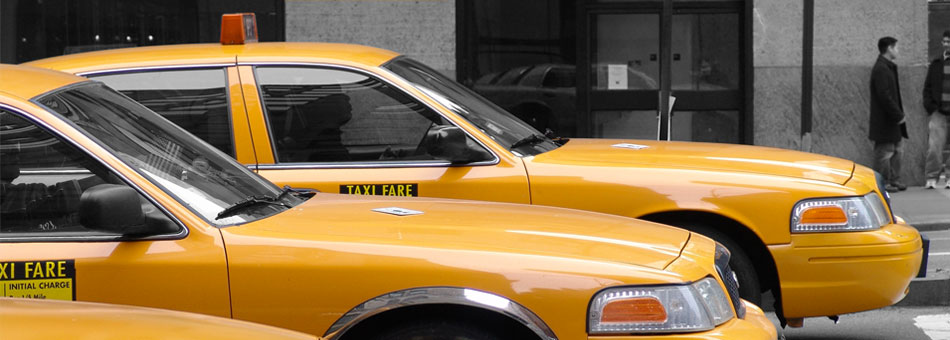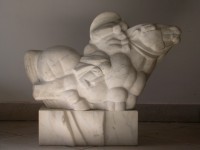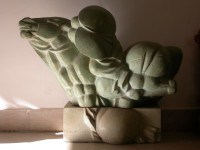Tasnádi Attila characterizes the works of Ferenc Gyurcsek as follows:
Mr. Ferenc Gyurcsek activity as sculptor can be approached in various ways, like all significant artist’s achievements. It may be qualified according to the viewpoint of the artist’s conception or of assumed ideas, it may be observed wit regard to the level of formal realisation or of expression as well, furthermore, it can be considered with regard to the practical tasks undertaken and functions fulfilled by his works. Any viewpoint be chosen, the quality of Mr. Gyurcsek’s life- work seems to be unquestionable. This artist’s activity has a vocation to formulate and express true minds of life, and it is capable to surprise with more and more original approach to his themes, with more and more specific view to forms and solutions of composition. He is concerned about the relation between man and world since the start of career, he looks for situations of life, thereby one can form life of his looks for situations of life, thereby one can form life of his own and that of his community.
Thus it is not occasional, that he is affected primarily to monumental works serving for the community, and when he sometimes thinks about small or middle-sized pieces in lack of commission, he has the possibility of display on a public place in view. This is the origin, that even his small-sized works are stressed by monumental force and a powerful breathing. His impression is emphasised by materials among them dozen of his statues for public places, make up to now, headed by Tanúhegy of Szolnok, give an important extension of our ideas about monuments.
His manner of presentation advances in the language of forms to synthesis, in the thoughts to generalisation. He is interested not very much in concrete things but more in principles and trends to be derived therefrom. He shapes statues in a building- like manner but without drawing away from the shapes of the real world, and uses them as representative of his moral and social viewpoints and sociological recognitions. He used often the plastic techniques of the futurists on the base of movement phases in the early seventies He made an entire group of statues in this multiplying the figures style. He had a double am with this dynamic repetition of certain elements of statues: he wished to emphasis the importance of expressed idea at one hand, and to relieve he monotony of geometric town view surrounding the statue.
The bustling and shouting dynamics of turns of segments and multiplication’s of arms, legs and faces have been compressed into blocks, the movement of multitude of bodies has been concentrated into one powerful waving in the eighties. The works of this period are characterised by content and forms with strictness going almost to a formula, a nature of an attitude to form history, a content intended to create a mass base and form a world concept are expressed therein. His works of such type are in reality visual comparisons, the meaning thereof are supported not by realistic analogy between object and symbol, but a so-called form of influence, which is capable to give a deeper and more complex reflection of reality as a natural form owing to its power to produce associations.
Mr. Ferenc Gyurcsek’s representations of work and workers should be included into this category, too, because of their cubist manner of construction. These works are not merely depictions of workers’ characters or phases of work, but rich in fantasy visualisations of social changes appearing in work relations too. He shows the personages acting with tools, among constructions which remind industrial forms, frames, trellis- works, as if bringing the human figure face to face with the environment made by himself. His workers know they have power in the hand and like modern Prometheus can turn the world with this possession.
The contradictions coupled with change of social system draw our master’s attention to problems of profession. He chose the plastic form of mounted statue, a dynamic galloping variant thereof, which is apparently neutral but as a matter of fact it has a far too tendentious content. It is known that horse is the symbol of freedom and youth, its run is synonym f flight and victory over space and time. It is beyond all questions that the more and more increasing period of mounted statues enables such interpretation of theme, nevertheless these statues hold a certain dramatic character too. This dramatic character may by taken in the act in their formal character itself.
Thinking about their construction, one should come to the conclusion, that they are in fact stable mobiles, i. e. The galloping of riders is greatly limited, bound to one place. The improvisatory mode of shaping is contradictory to their solid placing in space, reminding axioms. It is unquestionable, that this demonstration of contrast is deliberate. It illustrates the conflict between dreams and reality, namely that our intentions for improvement are colliding to wall build by ourselves of selfishness, impassiveness and unpretentiousness.
Mr. Ferenc Gyurcsek is of course distressed by he situation, because he wants to soar, act, create because the opportunism is not his line. We have not only a high opinion of his passionate artist’s activity but we regard it as the most honest possible, as well. The true art namely consists always of setting up alternatives, it insists always to raise people to higher degree. It is necessary to insist thereon, even in actual conditions without real possibilities at this moment. We have no means to measure without this effort.
Gyurcsek Ferenc
SCULPTOR
About his work


